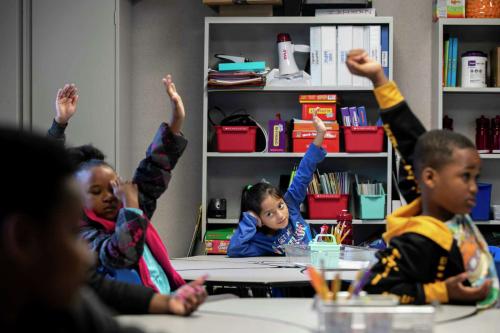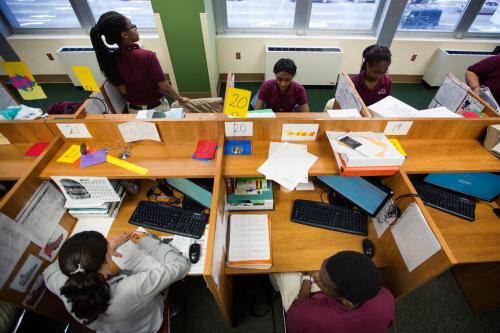Struggles over school desegregation are back. Howard County and New York City are just the best-known places now roiled by it.
Integrating public schools is tough, even in places where the population is varied enough to make it numerically possible. And after decades of experience, we still know very little about how to make it work.
Recent experience is not encouraging. A new report about diverse-by-design charter schools shows that only a minority of these schools has been able to attract the mixed population they sought. Out of 191 charter schools that were judged to have a “strong commitment” to diversity, 89 were still rated “low diversity” in enrollment.
Desegregation is difficult to achieve because children of different races live in different neighborhoods. But that’s not all: When families are able to choose schools without regard to location—for example, in the case of charter schools—the resulting schools are often more segregated than neighborhood schools.
Once achieved, desegregation can be hard to keep. Magnet and charter schools designed to be desegregated can tip over time to become dominated by students of one race/ethnicity. Efforts to create excellent schools that will attract a diverse population can end up attracting too many white and middle-class students. On the other hand, any parent will distrust and want to leave a school they fear does not prioritize their children’s needs.
The parents of a given school are like a political coalition: They are a group that agrees on a single action—enrolling in the school—but their reasons for doing so can differ. This has big implications for school desegregation. First, any parent’s enrollment decision must be seen as conditional and subject to reversal. Second, all parents might have common desires about some things (for example, hoping that great biology teacher stays around) and might leave if disappointed. Third, and most challengingly, different parents’ expectations easily come into conflict, so that promises made to one parent might drive another away.
The more parents’ priorities differ in ways that correlate with race or class—whether about the appropriate role of the PTA, curriculum, or what student transgressions should be indulged or punished—the more challenges school leaders face. This is true even when all the parents knowingly chose a diverse school and were aware of its commitment to serve children of all backgrounds.
Sometimes all parents can be convinced about new approaches to instruction, student grouping, and behavior meant to improve results for students struggling in an integrated environment, and sometimes they can’t. Sometimes an issue can split the faculty as well as the parents. School leaders must deal with conflict, find new compromises, and pay the price for necessary decisions.
Seeing a school as a coalition opens up questions like: How do schools make sure parents know what they can provide and what they can’t? How do school leaders manage different parent expectations? How rapidly can schools adapt to influxes of families with different backgrounds and expectations?
While there are no pat answers to these questions, a mountain of relevant experience can be mined for ideas and examples, starting with schools that transitioned from segregated to integrated, and with schools such as the new diverse-by-design charters. However, with occasional exceptions, very little useful material is available: Research on school segregation still focuses more on the numbers than on day-to-day challenges.
School leaders must benefit from others’ experiences about how to level with parents, and head off issues that, if allowed to fester, could lead to a school’s resegregation. Foundations and policymakers could also benefit from more realistic expectations about cost, time, and results.
With respect to school desegregation, our thinking isn’t a lot more advanced than it was in 1957: Find a way to get kids of different races/ethnicities into a school and hope it works out. Doing so was naive then, but reckless now. School desegregation is hard, but not impossible. Places like New York City and Howard County need the opportunity to learn from others’ experience to avoid another cycle of school desegregation followed by resegregation.







Commentary
Desegregating schools: More than just getting the numbers right
December 16, 2019